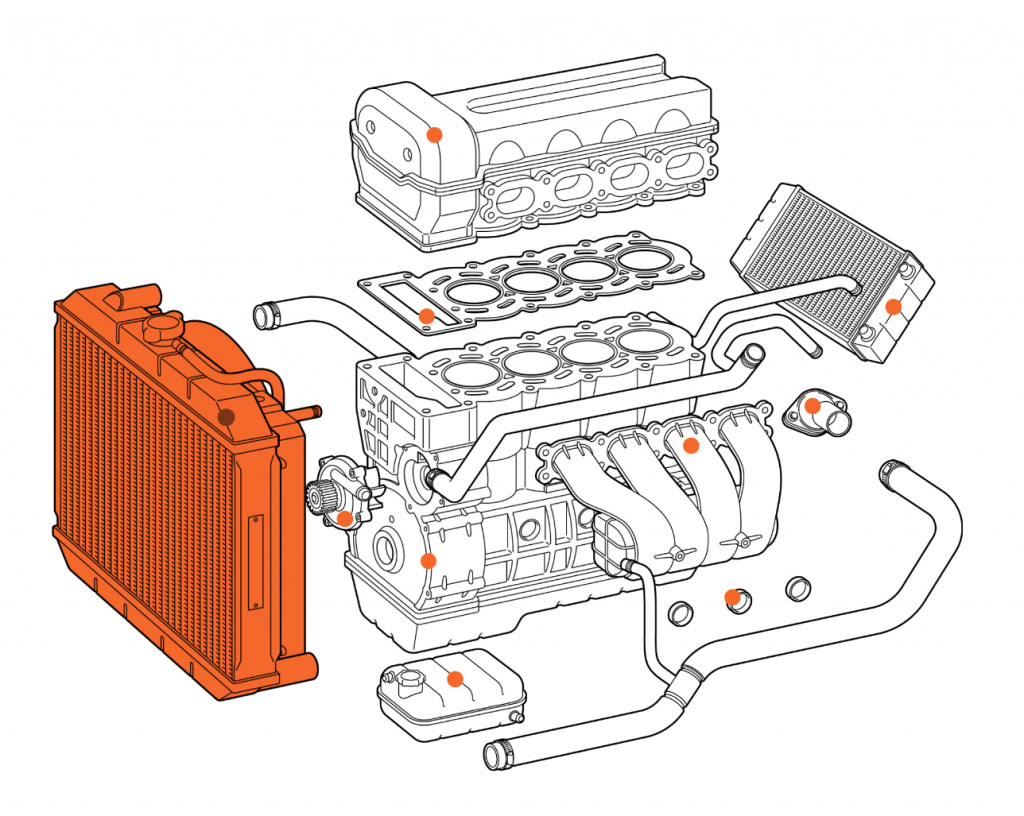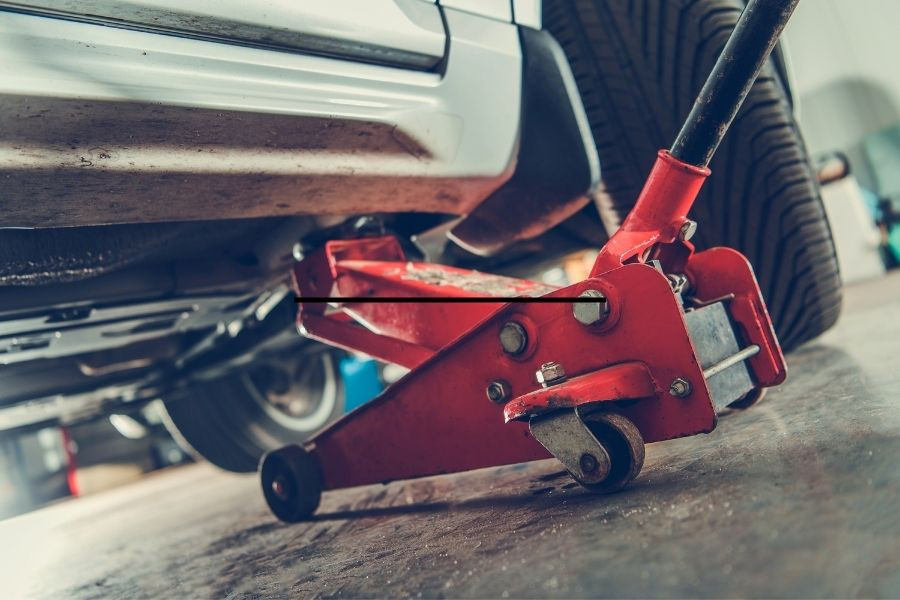How Much Does It Cost to Fix Chipped Car Paint?

Fixing chipped car paint doesn’t have to break the bank. The cost to fix chipped car paint depends on the severity of the damage, the type of paint, and whether you opt for a DIY repair or professional service from CARDIAGTECH.NET. We will explore the various factors influencing the cost and provide insights into the best solutions for restoring your car’s flawless finish with top-tier auto repair tools and equipment.
1. Understanding the Types of Car Paint Damage
Before diving into the costs, it’s crucial to identify the type of damage your car has sustained. Different types of damage require different repair techniques, which will ultimately affect the price. Here’s a detailed look at common types of car paint damage.
1.1. Paint Chips
Paint chips are one of the most common types of car paint damage. They occur when small pieces of paint are dislodged from the surface, often due to impacts from road debris, gravel, or other objects.
- Minor Paint Chips: These are typically small, about the size of a pencil eraser. They usually affect the top layer of the paint and don’t penetrate deeply.
 Minor car paint chips on a red car
Minor car paint chips on a red car - Extensive Paint Chips: Larger than minor chips, these can include cracking or peeling around the edges. They often expose the under layers of paint or even the metal beneath, leading to potential rust issues.
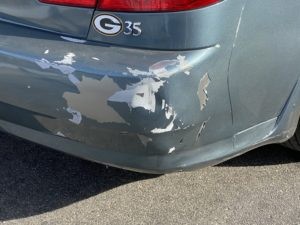 Extensive peeling of car paint
Extensive peeling of car paint
1.2. Scratches
Scratches are lines or marks on the car’s paint, usually caused by abrasive contact. The depth and length of the scratch determine the severity and the repair method needed.
- Minor Scratches: These are often superficial, affecting only the clear coat layer. If the scratch disappears when wet, it’s likely a minor clear coat scratch. These scratches are usually less than 6 inches long.
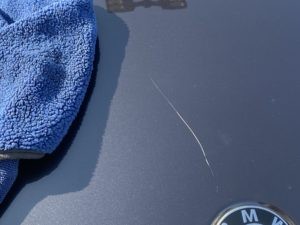 Minor scratch on a car door
Minor scratch on a car door - Extensive Scratches: Deeper scratches that penetrate the clear coat and reach the paint or even the metal underneath are considered extensive. Scratches longer than 6 inches also fall into this category. These scratches require more intensive repair to prevent rust and maintain the car’s appearance.
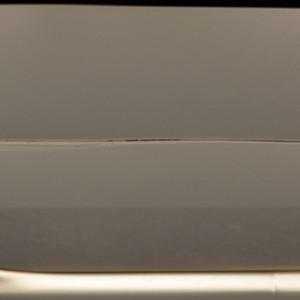 Extensive scratch on a car
Extensive scratch on a car
1.3. Scrapes
Scrapes occur when the car’s paint is dragged against another surface, resulting in broader areas of damage compared to scratches.
- Minor Scrapes: These are typically surface-level and contained within a small area. They might only affect the top layer of the paint, without exposing the metal. Sometimes, minor scrapes are just transfer from another object and can be removed with rubbing compound.
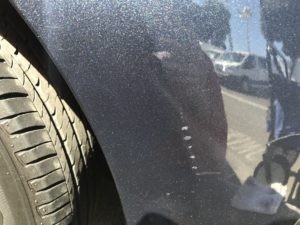 Minor scrape on a car bumper
Minor scrape on a car bumper - Extensive Scrapes: These involve more significant damage, potentially misshaping the car’s surface or removing paint completely. Extensive scrapes cover a larger area and expose the metal, requiring comprehensive repair to restore the car’s finish.
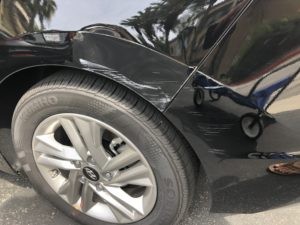 Extensive scrape on a car panel
Extensive scrape on a car panel
1.4. Dents
Dents are indentations in the car’s body, often caused by impacts. When dents are accompanied by paint damage, the dent should be repaired first to avoid affecting the paint job.
- Minor Dents: These are usually found on flat surfaces and are relatively easy to repair.
- Extensive Dents: Dents on curved surfaces or those that have severely misshapen the metal are more challenging to fix. In extreme cases, the damage might be irreparable, especially on parts like crushed bumpers.
 Extensive dent on a car
Extensive dent on a car
2. Factors Influencing the Cost of Car Paint Repair
Several factors can impact the cost of fixing chipped car paint. Understanding these can help you estimate the potential expenses and make informed decisions.
2.1. Severity of Damage
The extent of the damage is a primary cost driver. Minor chips and scratches that only affect the clear coat are cheaper to fix than extensive damage that penetrates multiple layers of paint or affects the metal. According to a 2023 report by the National Automobile Dealers Association (NADA), the cost of repairing minor paint damage averages around $150-$300, while more severe damage can range from $500 to $1,000 or more per panel.
2.2. Size and Location of the Damage
The size of the affected area and its location on the car also play a role. Larger areas require more materials and labor to repair, increasing the cost. Damage on complex or hard-to-reach areas, such as edges or corners, may also incur higher labor costs due to the precision required.
2.3. Type of Paint
The type of paint used on your car can significantly influence repair costs. Standard paints are generally less expensive to match and apply. However, specialized paints like metallic, pearlescent, or multi-coat finishes require more skill and materials to blend seamlessly, driving up the cost. Data from PPG Industries, a leading paint supplier, indicates that the cost of specialized paints can be 20-30% higher than standard paints.
2.4. Repair Method
The method used to repair the paint damage also affects the cost. Options include touch-up paint, mobile paint repair services, and traditional body shop repairs. Touch-up paint is the cheapest option for minor damage, while body shops offer comprehensive solutions for extensive damage but come at a higher price.
2.5. Labor Costs
Labor costs vary depending on the region and the shop’s expertise. Areas with a higher cost of living typically have higher labor rates. Highly skilled technicians with specialized certifications may also charge more for their services. According to the Bureau of Labor Statistics, the median hourly wage for automotive body and glass repairers was $23.59 as of May 2022.
2.6. DIY vs. Professional Repair
Choosing between DIY and professional repair can significantly impact the overall cost. DIY repairs are cheaper upfront, but they require time, skill, and the right tools. Professional repairs offer higher quality and convenience but come at a premium. A study by the Automotive Aftermarket Industry Association (AAIA) found that DIY repairs could save consumers up to 50% on minor paint damage, but professional repairs are recommended for more complex issues.
3. How Much Does Car Paint Repair Cost?
The cost to fix chipped car paint varies based on the extent of the damage and the repair method chosen. Here’s a detailed breakdown of the costs associated with different types of car paint repairs.
3.1. Minor Damage Repair Costs
For minor paint chips, scratches, and scrapes, mobile technicians offer a convenient and cost-effective solution.
- Mobile Technicians:
- Cost: $150 to $250 for all minor damage repairs on the vehicle.
- Pros: Affordable, convenient (they come to you), suitable for small, shallow chips and scratches.
- Cons: May not provide a brand-new look, best for maintaining the existing condition and preventing further damage.
- Ideal for: Those looking for a quick, inexpensive fix for minor cosmetic issues.
- Touch-Up Paint:
- Cost: $20 to $50 for a touch-up paint kit.
- Pros: Cheapest option, suitable for very small chips and scratches.
- Cons: Requires skill to apply correctly, may not perfectly match the original paint, not suitable for larger areas.
- Ideal for: DIY enthusiasts comfortable with minor cosmetic repairs.
3.2. Extensive Damage Repair Costs
For more extensive damage, professional services like mobile spray paint or body shops are necessary to achieve a high-quality finish.
- Mobile Spray Paint Services:
- Cost: $200 to $400 per panel.
- Pros: Good for moderate damage on vertical surfaces (e.g., car doors), suitable for multiple panels.
- Cons: Quality may vary, not ideal for horizontal surfaces due to dust and particle interference.
- Ideal for: Moderate damage on vertical panels where a balance between cost and quality is desired.
- Body Shop Repairs:
- Cost: $250 to $600 per panel.
- Pros: Highest quality finish, suitable for extensive damage on any surface, access to controlled environments for optimal results.
- Cons: Most expensive option, requires leaving the car at the shop for several days.
- Ideal for: Extensive damage, horizontal surfaces, or when a brand-new look is desired.
3.3. Dent Repair Costs
If the paint damage is accompanied by dents, the dent repair cost should also be considered.
- Minor Dent Repair:
- Cost: Approximately $75 per panel.
- Pros: Relatively inexpensive, can be done by mobile technicians.
- Extensive Dent Repair:
- Cost: Varies widely depending on the severity and location of the dent.
- Considerations: Dents on curved surfaces or severely misshapen metal may be more expensive or even unfixable.
3.4. Overall Cost Estimates
To provide a clearer picture, here are some overall cost estimates for different repair scenarios:
| Damage Type | Repair Method | Estimated Cost |
|---|---|---|
| Minor Paint Chip | Touch-Up Paint | $20 – $50 |
| Minor Scratch | Mobile Technician | $150 – $250 |
| Extensive Scrape (Vertical) | Mobile Spray Paint | $200 – $400 |
| Extensive Dent & Paint Damage | Body Shop Repair | $500 – $1000+ |
| Multiple Minor Damages | Mobile Technician (All) | $150 – $250 |
| Moderate Damage (Horizontal) | Body Shop Repair | $250 – $600 |
4. DIY Car Paint Chip Repair: A Step-by-Step Guide
For those who prefer a hands-on approach, repairing car paint chips yourself can be a cost-effective option. Here’s a detailed guide to help you through the process:
4.1. Gathering the Necessary Supplies
Before you start, gather all the necessary supplies. Having everything on hand will make the process smoother and more efficient.
- Touch-Up Paint: Purchase touch-up paint that matches your car’s color code. You can find this code on a sticker inside the driver’s side doorjamb or in the owner’s manual.
- Cleaning Supplies:
- Car wash soap
- Clean microfiber cloths
- Wax and grease remover
- Preparation Tools:
- Fine-grit sandpaper (2000-3000 grit)
- Rubbing alcohol
- Masking tape
- Application Tools:
- Small paint brushes or applicators
- Toothpicks (for small chips)
- Finishing Supplies:
- Rubbing compound
- Polishing compound
- Wax
4.2. Preparing the Area
Proper preparation is crucial for achieving a professional-looking result.
- Wash the Car: Start by washing your car thoroughly to remove any dirt, debris, or wax from the area around the chip.
- Clean the Chip: Use wax and grease remover to clean the chip and surrounding area. This ensures the paint adheres properly.
- Sand the Edges: If the chip has rough edges, lightly sand them down with fine-grit sandpaper. Wet the sandpaper and use gentle, circular motions to smooth the edges.
- Mask the Area: Use masking tape to protect the surrounding paint from accidental application.
4.3. Applying the Touch-Up Paint
Applying the paint correctly is key to a seamless repair.
- Shake the Paint: Shake the touch-up paint thoroughly to ensure the pigments are evenly distributed.
- Apply Thin Coats: Use a small brush or toothpick to apply a thin layer of paint to the chip. Avoid applying too much paint at once, as this can create a noticeable bump.
- Allow to Dry: Let the paint dry completely according to the manufacturer’s instructions. This usually takes a few hours.
- Apply Additional Coats: Apply additional thin coats as needed to build up the paint to the level of the surrounding surface. Allow each coat to dry before applying the next.
4.4. Blending and Finishing
Once the paint is dry, blend it with the surrounding area for a seamless finish.
- Wet Sand (Optional): If there are any imperfections or the paint is slightly raised, lightly wet sand the area with ultra-fine sandpaper (3000 grit).
- Apply Rubbing Compound: Use a clean microfiber cloth to apply rubbing compound to the area. Rub in a circular motion to blend the edges of the touch-up paint with the surrounding paint.
- Apply Polishing Compound: Follow up with polishing compound to restore the shine to the repaired area.
- Wax the Area: Apply a coat of wax to protect the repaired area and blend it with the rest of the car’s paint.
5. Professional Car Paint Chip Repair: What to Expect
If you prefer to leave the repair to the professionals, here’s what you can expect from a professional car paint chip repair service.
5.1. Choosing a Repair Shop
Selecting the right repair shop is crucial for ensuring a high-quality repair.
- Check Reviews: Look for shops with positive reviews and a reputation for excellent work.
- Ask for Recommendations: Ask friends, family, or colleagues for recommendations.
- Verify Certifications: Ensure the shop has certified technicians and uses quality materials.
- Get an Estimate: Obtain a detailed estimate before committing to the repair.
5.2. The Repair Process
A professional car paint chip repair typically involves the following steps:
- Assessment: The technician will assess the damage and provide a repair plan.
- Preparation: The area around the chip will be cleaned, sanded, and masked.
- Paint Application: The technician will apply multiple thin coats of paint, using specialized equipment to match the color and blend it seamlessly.
- Finishing: The repaired area will be polished and waxed to restore the shine and protect the paint.
5.3. Benefits of Professional Repair
- High-Quality Finish: Professionals have the skills and equipment to achieve a flawless finish.
- Color Matching: They can precisely match the paint color to ensure a seamless repair.
- Warranty: Many shops offer a warranty on their work, providing peace of mind.
- Convenience: Professional repair saves time and effort compared to DIY methods.
6. Cost-Saving Tips for Car Paint Repair
Repairing car paint can be expensive, but there are several ways to save money without compromising quality.
6.1. Get Multiple Estimates
Obtain estimates from multiple repair shops to compare prices and services. This can help you find the best deal for your budget. According to a survey by Consumer Reports, getting multiple estimates can save you up to 20% on car repairs.
6.2. Consider Mobile Repair Services
Mobile repair services are often more affordable than traditional body shops for minor damage. They also offer the convenience of coming to your location.
6.3. Use Touch-Up Paint for Minor Chips
For small chips and scratches, touch-up paint is a cost-effective solution. Just make sure to follow the instructions carefully and take your time to achieve the best results.
6.4. Bundle Repairs
If you have multiple areas of damage, consider bundling the repairs to save on labor costs. Many shops offer discounts for multiple repairs done at the same time.
6.5. Maintain Your Car’s Paint
Regular washing and waxing can help protect your car’s paint and prevent minor damage from becoming more severe. This can save you money on repairs in the long run.
7. Maintaining Your Car’s Paint to Prevent Chips
Preventive measures can significantly reduce the likelihood of paint chips and scratches, saving you money on repairs.
7.1. Regular Washing
Washing your car regularly removes dirt, debris, and contaminants that can damage the paint. Aim to wash your car at least every two weeks, or more frequently if you live in an area with harsh weather conditions.
7.2. Waxing
Waxing provides a protective layer over the paint, shielding it from UV rays, road salt, and other environmental factors. Wax your car every three to six months to maintain the protective barrier.
7.3. Paint Protection Film (PPF)
Paint Protection Film (PPF) is a clear, adhesive film that is applied to the car’s surface to protect it from chips, scratches, and other damage. PPF is a more expensive option, but it offers superior protection compared to wax. According to a study by the International Carwash Association, PPF can reduce the risk of paint damage by up to 80%.
7.4. Avoid Following Trucks Too Closely
Following trucks too closely can expose your car to flying rocks and debris, which can cause paint chips. Maintain a safe following distance to reduce the risk of damage.
7.5. Park Carefully
Be mindful of where you park your car. Avoid parking near shopping carts, trees, or other objects that could potentially scratch or dent your car’s paint.
8. The Impact of Location on Car Paint Repair Costs
The geographic location where you seek car paint repair services can significantly influence the overall cost. Factors such as the local cost of living, the availability of skilled technicians, and the demand for auto body services can all play a role.
8.1. Urban vs. Rural Areas
Generally, urban areas tend to have higher labor rates compared to rural areas due to the higher cost of living. Shops located in major cities like Los Angeles, New York, or Miami may charge more for car paint repairs than those in smaller towns or rural areas.
8.2. Regional Differences
Different regions of the United States may have varying levels of demand for auto body services, which can affect pricing. For example, areas with harsh weather conditions or a high prevalence of accidents may have higher demand, leading to increased prices.
8.3. State Regulations and Taxes
State regulations and taxes can also impact the cost of car paint repairs. States with higher taxes or stricter regulations on auto body shops may have higher prices compared to states with more lenient policies.
8.4. Competition Among Repair Shops
The level of competition among repair shops in a particular area can also influence pricing. Areas with a high concentration of auto body shops may offer more competitive prices to attract customers.
9. Insurance Coverage for Car Paint Damage
Whether or not your insurance policy will cover car paint damage depends on the type of coverage you have and the circumstances surrounding the damage.
9.1. Comprehensive Coverage
Comprehensive coverage typically covers damage to your vehicle that is not caused by a collision, such as damage from hail, vandalism, or falling objects. If your car paint damage is the result of one of these covered events, your comprehensive coverage may help pay for the repairs, subject to your deductible.
9.2. Collision Coverage
Collision coverage typically covers damage to your vehicle that is caused by a collision with another vehicle or object. If your car paint damage is the result of a collision, your collision coverage may help pay for the repairs, subject to your deductible.
9.3. Uninsured/Underinsured Motorist Coverage
If your car paint damage is caused by an uninsured or underinsured driver, your uninsured/underinsured motorist coverage may help pay for the repairs. This type of coverage is designed to protect you when you are involved in an accident with a driver who does not have adequate insurance to cover your damages.
9.4. Deductible
It’s important to note that most insurance policies have a deductible, which is the amount you must pay out of pocket before your insurance coverage kicks in. If the cost of your car paint repair is less than your deductible, it may not be worth filing a claim.
9.5. Filing a Claim
Before filing an insurance claim for car paint damage, it’s a good idea to get an estimate from a reputable repair shop. This will give you an idea of the potential cost of the repairs and help you determine whether or not it’s worth filing a claim.
10. Why Choose CARDIAGTECH.NET for Your Auto Repair Needs?
At CARDIAGTECH.NET, we understand the challenges faced by auto repair professionals. That’s why we offer a wide range of high-quality tools and equipment designed to enhance efficiency, accuracy, and safety in your work. Here’s how our products can benefit you:
10.1. Enhancing Efficiency and Reducing Repair Time
Our advanced diagnostic tools and equipment are designed to streamline the repair process, reducing the time it takes to diagnose and fix issues. This means you can serve more customers and increase your revenue.
10.2. Increasing Accuracy and Safety
Accuracy is crucial in auto repair. Our precision tools ensure that every job is done right the first time, reducing the risk of errors and comebacks. Additionally, our safety equipment protects you from potential hazards in the workplace.
10.3. Cost Savings for Your Customers
By using CARDIAGTECH.NET’s tools, you can provide more accurate diagnoses and efficient repairs, saving your customers money on unnecessary parts and labor. This enhances your reputation and builds customer loyalty.
10.4. Boosting Revenue and Profitability
Investing in high-quality tools and equipment from CARDIAGTECH.NET translates to increased efficiency, accuracy, and customer satisfaction, ultimately boosting your revenue and profitability.
10.5. Elevating Your Reputation and Service Quality
By using our top-of-the-line equipment, you demonstrate a commitment to quality and professionalism, elevating your reputation and setting you apart from the competition.
Conclusion
The cost to fix chipped car paint can vary widely depending on several factors, including the severity of the damage, the type of paint, and the repair method chosen. While DIY repairs can save money, professional services offer a higher-quality finish and greater convenience. Regular maintenance and preventive measures can also help minimize the risk of paint damage.
At CARDIAGTECH.NET, we are committed to providing auto repair professionals with the tools and equipment they need to deliver exceptional service. Contact us today at +1 (641) 206-8880 or visit our website at CARDIAGTECH.NET to learn more about our products and how they can benefit your business. Our address is 276 Reock St, City of Orange, NJ 07050, United States. Let us help you enhance your efficiency, accuracy, and profitability in the auto repair industry.
Frequently Asked Questions (FAQ)
1. How can I determine the exact color code of my car’s paint?
The color code is usually found on a sticker inside the driver’s side doorjamb or in the owner’s manual. You can also contact your car’s manufacturer with your VIN to get the exact color code.
2. Is it worth fixing minor paint chips on my car?
Yes, fixing even minor paint chips is important to prevent rust and further damage to the underlying metal.
3. Can I use touch-up paint on any type of car paint?
Yes, touch-up paint is available for all types of car paint, but it’s essential to match the color code precisely for the best results.
4. How long does it take to repair car paint chips?
DIY repairs can take a few hours, while professional repairs can take anywhere from a few hours to a few days, depending on the extent of the damage.
5. Will a mobile paint repair service provide the same quality as a body shop?
Mobile services are great for minor to moderate damage, but for extensive damage, a body shop is recommended for the highest quality finish.
6. How often should I wax my car to protect the paint?
Waxing your car every three to six months helps maintain the protective barrier and prevent damage.
7. What is Paint Protection Film (PPF), and is it worth the cost?
PPF is a clear film that protects your car’s paint from chips and scratches. It’s more expensive than waxing but offers superior protection and can be worth the investment for high-value vehicles.
8. Does my insurance cover car paint damage?
It depends on your policy. Comprehensive coverage typically covers non-collision damage, while collision coverage covers damage from accidents. Review your policy or contact your insurance provider for details.
9. What tools do I need for a DIY car paint chip repair?
You’ll need touch-up paint, cleaning supplies, fine-grit sandpaper, masking tape, applicators, rubbing compound, polishing compound, and wax.
10. How do I choose a reputable car paint repair shop?
Check online reviews, ask for recommendations, verify certifications, and get a detailed estimate before committing to the repair.




